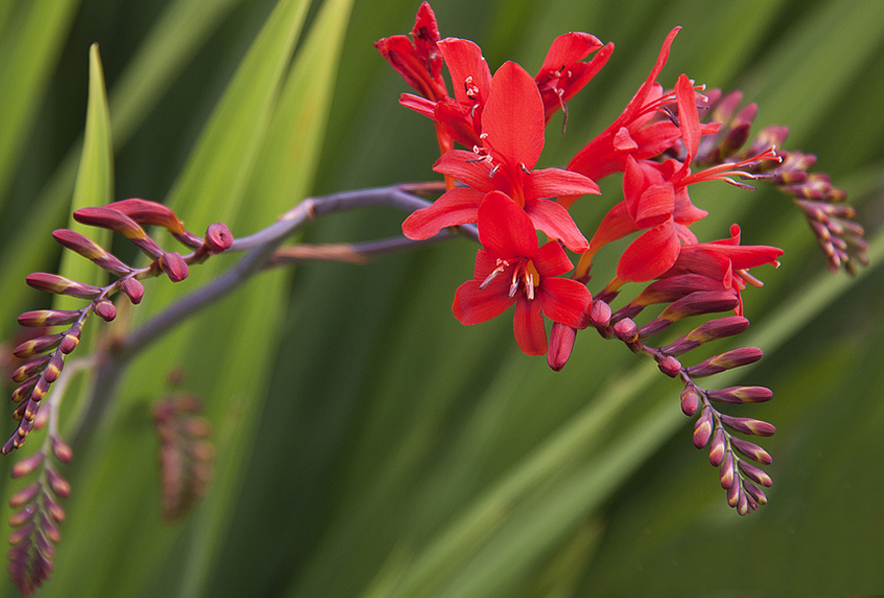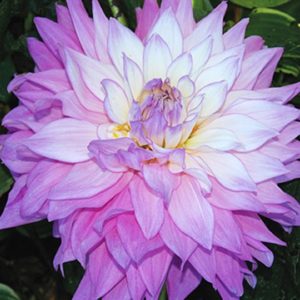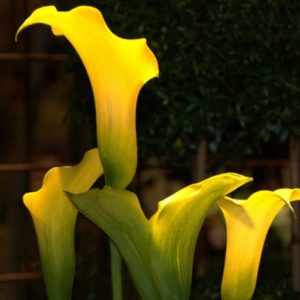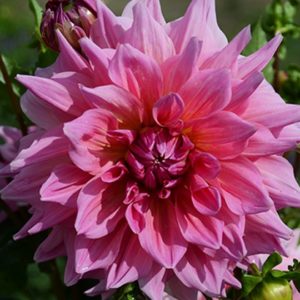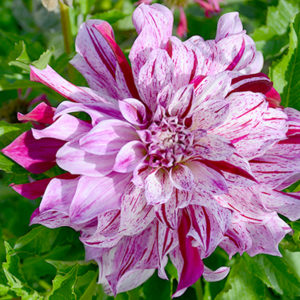Description
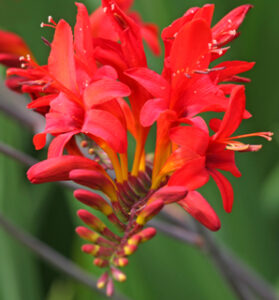 Crocosmia,
Crocosmia,
Lucifer
Crocosmias, like dahlias, are some of the most underappreciated flowers in America. They are incredibly easy to grow, multiply rapidly and provide much needed color at the end of the summer when our weary gardens have nearly given up the ghost or succumbed to the weed gods. The plants belong to the Iris family and are very closely related to gladiolas.
Crocosmias are indigenous to the coastal regions of South Africa like many gladiolas. The name, Crocosmia, derives from the Greek krokos, or Latin crocus, (meaning “saffron”) and the Latin osme, (meaning “smell”). The reason for this naming is that the dried flowers, when immersed in warm water, smell strongly of saffron.
The dominant members of the genus, Crocosmia, are the Montbretia Hybrids. All of the Crocosmia cultivars that Harvesting History offers are Montbretia Hybrids. The Montbretia Hybrids were created circa 1880 by the French plantsman, Mr. Lemoine, who crossed two Crocosmia, C. aurea and C. pottsii. The resulting plants became the most famous Crocosmia of all time and were the parents of most of the Crocosmia available today.
Crocosmia have delicate, swordlike leaves which resemble small gladiola leaves. The plants produce a blossom spike which branches, unlike the gladiola spike, and is covered with brightly colored blossoms in red, yellow, rust and orange. A single stem can produce as many as 30 flowers. The stems rise from the center of the plants and at maturity for a graceful arch of intense color. The top of the arch is rarely taller than 24 inches.
One of the nicest features of these plants is that they are very clean and not plagued with insects or disease. They do best in full sun, but can also tolerate light shade. They multiply rapidly and should be lifted and thinned every 4-5 years.
Planting Crocosmias
Crocosmias should be planted or divided during the spring. They prefer a light soil which has been amended with some organic matter like compost, peat moss and/or manure (dehydrated cow manure or aged manure from a farm.). Most nurseries will tell you that Crocosmias are hardy from Hardiness Zones 7-9. I have been growing Crocosmias in Hardiness Zone 4, unprotected during the winter, for 10 years and they are doing fine. Crocosmias are very hardy.
The bulbs should be planted 4-6 inches deep and 3-4 inches apart in an area where they can be allowed to spread and where they are not subjected to strong winds.
Planting Crocosmias in Containers
Crocosmias can be grown easily in containers. An 8-inch diameter, 8-10 inch deep container will accommodate 8-10 corms. The containers should be filled with a sturdy, high organic matter soil like the one we describe below.
The Best Soil Mix for Containers
Into this soil mix, which approximately is 60% top soil, 20 % peat moss and 20% compost or manure, add ½ cup bone meal. Place 4 inches of soil in the container, arrange the corms and then fill the containers with another 4-5 inches of soil. Soak the soil, but do not allow the pot to stand in water. Keep the soil slightly moist at all times and fertilize with a blossom booster fertilizer like Jack’s Bloom Booster every 2 weeks.

